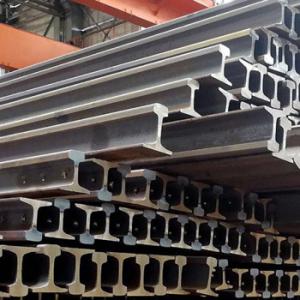
Add to Cart
Cross-sectional Shape Of The Steel Rail Adopts An I-shaped Crosssection With Bending Resistancerail Head, Rail Waist And Railbottom Three Parts
In order to make the rails better withstand the forces from all aspects and ensure the necessarystrenath conditions. the rails should have a sufficient height.lts head and bottom should havesufficient area and height, waist and bottom should not be too thin.
For Heavy-haul Railways And Particularly Busy Sections Of Railways Laying 75kg/m Steel Rails
It is laid on the main trunk line.The station line and special line aregenerally laid 43kg/m steel rails.
More short-cut special section rails are now used, abbreviated as the “AT" rail.ln order to meetthe needs of structures such as roads, bridges, and seamless lines, the railwayshave also adoptedspecial section steelrails.
RAILS ARE WIDELY USED AND DURABLE
Diferent types of steel ralls have diferent functions. Rails are mainly used in ralways, cranes and underground mines, andtemporarytransoortation routes and light-duty locomotive use routes are laid in forest areas, factories and construction sites.
Product Paramenters



